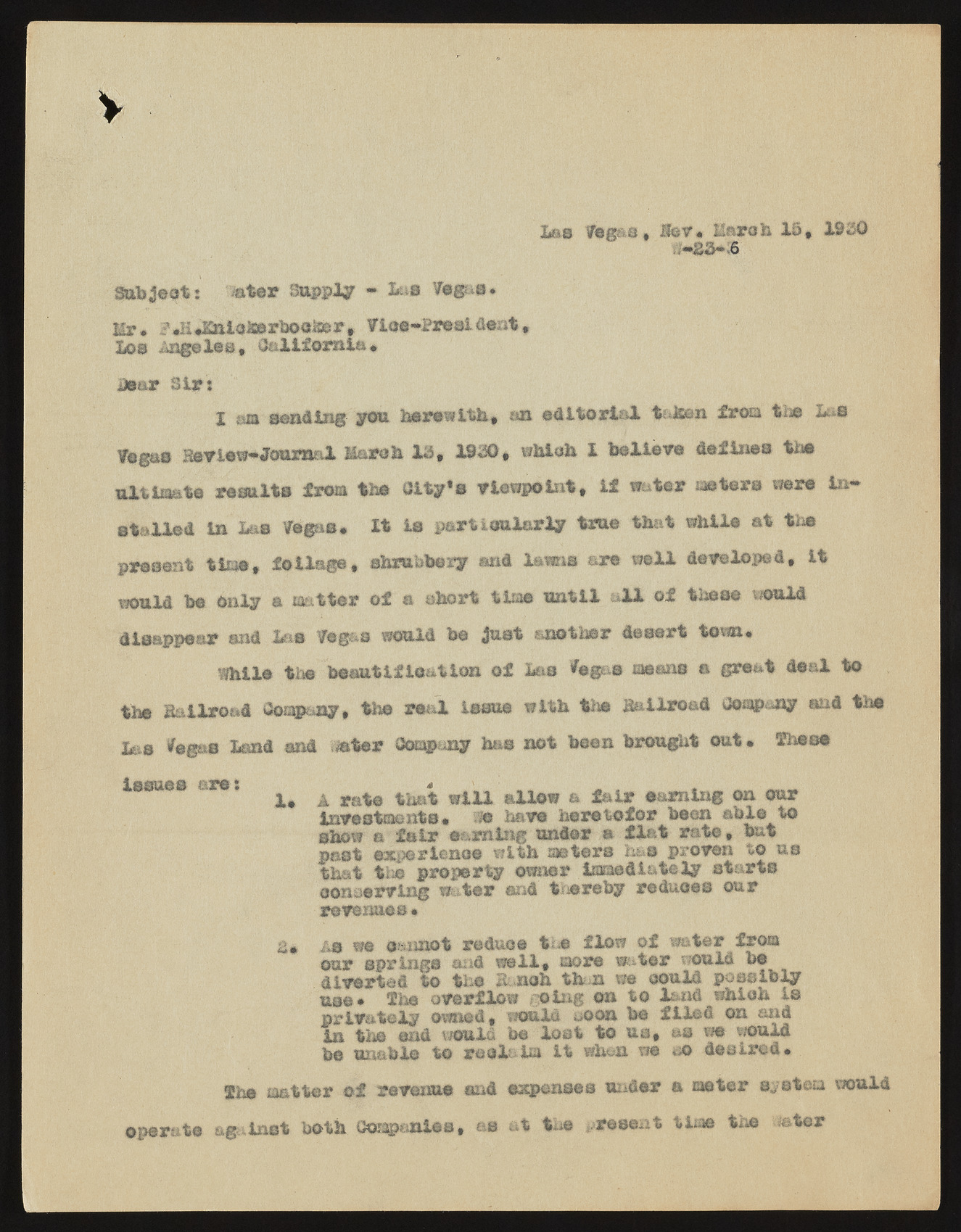Copyright & Fair-use Agreement
UNLV Special Collections provides copies of materials to facilitate private study, scholarship, or research. Material not in the public domain may be used according to fair use of copyrighted materials as defined by copyright law. Please cite us.
Please note that UNLV may not own the copyright to these materials and cannot provide permission to publish or distribute materials when UNLV is not the copyright holder. The user is solely responsible for determining the copyright status of materials and obtaining permission to use material from the copyright holder and for determining whether any permissions relating to any other rights are necessary for the intended use, and for obtaining all required permissions beyond that allowed by fair use.
Read more about our reproduction and use policy.
I agree.Information
Digital ID
Permalink
Details
Member of
More Info
Rights
Digital Provenance
Publisher
Transcription
V Las Vegas , lev* March 15, 1930 '6 Sabjeot: sater Supply - to Vsg^s* Mr* i'*H«ii&ieharb©«isnrt. Vlae-President, Los Angeles, California, mar Sirs I $a sending you herewith, an editorial t&fclen from the Las Togas ih^iew* Journal March 13, 1950, which 1 believe defines the ultimate results from the City*® viewpoint, if water meters were In* stalled .In Las Togas# it is particularly true that while at tbs present time, foliage, shrubbery and lewis are well developed, it would bo only a matter of a abort time until »U of these viouid disappear end Las Togs*® would be just gisotbsr desert towa# While the beautification of Las *egas means a great deal to the Bailroad Ooapany, the real issue with the Bailroad Uomp.ny and ths Las tfeg&s Land and M%er Company has not been brought out • These issues are i * 1« A rat© that win allow a fair earning on our investments, m have heretofor boon able to show a fair earning under a flat rate, but past experience with meters has proven to us that the property owner issued lately starts conserving water and thereby reduoes our revenues« S# a® we oannot reduce t .e flow of water from our springs and well, more water v.-ould be diverted to the It noh thin we could possibly use* The overflow oiag on to land which is privately owned, would ooon be filed on and in the end would be lost to us, as we would be unable to reelaist it whoa m so desired* fh$ matter of revenue and expenses under a mater system would operate against both Companies, as at the present time the -:m%er

